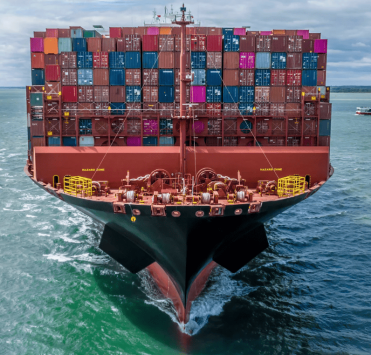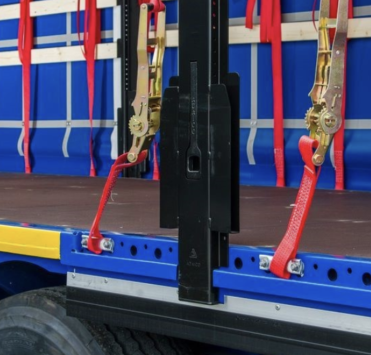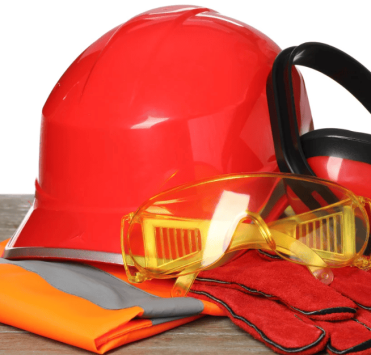Types of containers and their classification

The container has changed global logistics. Before their appearance, seaports were filled with sacks, boxes, and barrels. Loaders manually moved goods from ship to warehouse, onto railroad platforms, and then back onto trucks. Each transshipment took days and increased the risk of damage, theft, and documentation errors.
Today there is a specialized classification of containers, which forms the basis of international trade. Standardized containers move between ships, trains and trucks without overloading the contents. Thanks to this:
- document flow has been simplified;
- processing time has been reduced from days to hours;
- transportation costs have decreased many times.
The correct choice is directly related to the safety of the cargo and the economic efficiency of transportation. The difference of a few centimeters in height or width brings significant savings when sending bulky but light goods.

The ability to control temperature becomes a decisive factor for pharmaceutical products, food products, chemicals with a narrow storage temperature range.
Table of container classification by size
Container Type | Length (mm) | Width (mm) | Height (mm) | Max Weight (kg) | Volume (m³) |
Standard (DV) 20' | 6 058 | 2 438 | 2 591 | 30 480 | 33.2 |
Standard (DV) 40' | 12 192 | 2 438 | 2 591 | 30 480 | 67.7 |
High Cube (HC) 40' | 12 192 | 2 438 | 2 896 | 30 480 | 76.3 |
High Cube (HC) 45' | 13 716 | 2 438 | 2 896 | 30 480 | 85.7 |
Open Top (OT, HT) 20' | 6 058 | 2 438 | 2 591 | 30 480 | 32 |
Open Top (OT, HT) 40' | 12 192 | 2 438 | 2 591 | 30 480 | 66 |
Platform (PL, Flatrack) 20' | 6 058 | 2 438 | - | 40 000 | - |
Platform (PL, Flatrack) 40' | 12 192 | 2 438 | - | 45 000 | - |
Tank Container (TN) 20' | 6 058 | 2 438 | 2 591 | 36 000 | 21 – 26 |
Flexitank (FT) 20' | 6 058 | 2 438 | 2 591 | 24 000 | 10 – 24 |
Standard containers (GP)
Let's ask a standard question: “What types of containers for shipping are there?” Answer: “Among the different types, let’s single out General Purpose (GP).” This is the basic category in the classification of shipping containers. These are metal boxes with rigid walls, a floor and a roof, with doors at one of the ends. They were created for the transportation of general cargo that does not require special conditions: industrial equipment, consumer goods, construction materials, baled cargo.
Main characteristics of standard containers:
- Material: corrosion-resistant steel with anti-corrosion treatment.
- Floor covering: moisture-resistant plywood 28-30 mm thick.
- Door locks: equipped with the ability to seal.
- Seals: rubber gaskets to protect against moisture penetration.
- Fittings: Eight corner mounts for overloading and securing.
What are the sizes of containers? The most common are 20ft and 40ft containers. Their comparative characteristics:
20ft container (20'DV):
- External dimensions: 6.06 × 2.44 × 2.59 m
- Internal dimensions: 5.89 × 2.35 × 2.39 m
- Useful volume: about 33 m³.
- Maximum load capacity: 24-28 tons.
- Tare weight: 2.2-2.4 tons.
40ft container (40'DV):
- External dimensions: 12.19 × 2.44 × 2.59 m
- Internal dimensions: 12.03 × 2.35 × 2.39 m
- Useful volume: about 67 m³.
- Maximum load capacity: 26-30 tons.
- Tare weight: 3.7-4.0 tons.

Standard types of shipping containers deliver a variety of goods. They are suitable for palletized cargo: the floor structure can withstand the work of a forklift, and the internal dimensions allow you to accommodate Euro pallets (1200 x 800 mm) or American pallets (1200 x 1000 mm) with minimal loss of space.
Shippers choose 20-foot models for heavy, compact shipments: rolled metal, building materials, spare parts. 40-foot containers are effective for light bulky goods: furniture, household appliances, textiles, toys, where volume rather than weight becomes the limiting factor.
Containers with special sizes
High Cube (HC, HQ) containers subject to the international classification of containers, which are characterized by increased height — 2.9 m instead of the standard 2.59 m. An additional 30 cm allows you to place 15% more bulky but light cargo: textiles, furniture, household appliances, auto parts. 40-foot High Cube containers have become the de facto standard for sea transport of consumer goods from Asia to Europe and America. Shippers receive savings of up to 10-12% on transportation costs per unit of goods.
Pallet Wide (PW) has an internal width of 2.44-2.50 m instead of the standard 2.35 m. Increasing the width allows you to place two Euro pallets (1200 x 800 mm) across the width of the container with a gap for convenient loading. The standard container includes 11 euro pallets in a row (22 in total), and the Pallet Wide — 11 in length and 2 in width (24 in total), which gives an increase in capacity by 9%.

The HC+PW combination enhances the advantages: the container is both taller and wider than the standard one. It is used for the most efficient loading of palletized cargo, when the goal is — reduce the cost of transporting a unit of goods.
Containers with temperature control
Modern refrigerated containers (RE) are equipped with a refrigeration unit capable of maintaining a constant temperature from -30°C to +30°C. The built-in compressor unit operates from an external power supply on a ship, terminal, railway platform or from a diesel generator on a vehicle chassis. Refrigerated containers transport:
- frozen meat;
- fish;
- fruit;
- vegetables;
- flowers;
- vaccines;
- biological drugs.
Insulated containers (HI) do not have their own refrigeration unit, but are equipped with reinforced thermal insulation of walls 70-100 mm thick. They are used for cargo that requires pre-cooling/heating before shipment. Insulated containers are more economical than refrigerated containers; they do not require power supply, but are not suitable for long-term transportation of perishable products.

Ventilated (VH) are equipped with adjustable ventilation holes to prevent moisture condensation. They do not transport dangerous goods, on the contrary, safe ones. For example, such as coffee, cocoa beans, nuts, fresh fruits, vegetables — products that release moisture and gases during storage. Natural ventilation prevents mold formation and product spoilage.
Specialized containers
Open top models (OT, UT, HT) are designed for cargo that is inconvenient to load through the end doors. The removable roof allows the crane to be used for vertical loading of heavy metal structures, pipes, machines, and large equipment. Varieties include Hard Top (HT) with a removable metal roof and Open Top (OT) with a canvas cover.

Platforms (PL) are a container base without walls and roof. They are used for transporting oversized cargo, tall metal structures, and construction equipment. Flatrack platforms have folding end walls that are raised when transporting long loads and lowered for stacking empty platforms.
.png)
Tank containers (TN) — These are tanks in a steel frame of standard container sizes. They transport liquid cargo: chemicals, food liquids, liquefied gases. The material of the tanks (stainless steel, aluminum) is selected according to the characteristics of the cargo, and the insulation maintains the required temperature conditions.

Flexitanks (FT) are flexible tanks made of polymer materials installed inside standard 20-foot containers for the transportation of liquid cargo. They allow the transportation of large volumes of liquids such as edible oils, wines, juices, syrups, and some chemical products. The flexible design adapts to the shape of the container, efficiently utilizing all available space. Flexitanks range in capacity from 10,000 to 24,000 liters, making them a convenient alternative to rail tank cars and sea barrels.

Choosing a suitable container
When choosing, consider:
- Cargo characteristics: weight, volume, temperature storage conditions.
- Processing method: palletized, bulk, liquid.
- Transportation route: availability of container equipment at points of origin/destination.
- Economic efficiency: the cost of transportation relative to the value of the cargo.
Common mistakes when choosing:
- Underestimation of the importance of dimensions for palletized shipments.
- Select a standard option for cargo requiring temperature control.
- Ignores infrastructure restrictions at the final destination.
Conclusion: Save Pro Solutions approach
Our company brings 12 years of experience in multimodal transportation, as well as other types of shipments. We select the type of container based on the physical and chemical properties of the cargo, its cost, and route characteristics.
Our specialists calculate the most profitable loading scheme, taking into account weight and size restrictions. We provide a full service cycle: from selecting the right model to customs clearance and delivery to the consignee.









